Cincinnati Stroke Scale vs NIHSS: Decoding Stroke Assessment
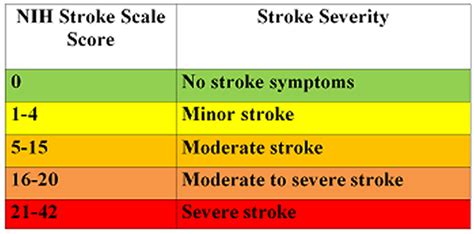
Explore the nuances of stroke assessment with the Cincinnati Stroke Scale vs NIH Stroke Scale. Enhance your medical knowledge for precise patient evaluation and informed healthcare decisions.
In the intricate landscape of healthcare, the Cincinnati Stroke Scale (CSS) and the NIH Stroke Scale (NIHSS) stand as two crucial tools employed by medical professionals to assess and diagnose stroke patients. As we delve into the realm of stroke evaluation, this article aims to unravel the distinctions between these two assessment scales, shedding light on their unique features and applications. In the ever-evolving field of medicine, understanding the nuances of these scales becomes paramount for healthcare practitioners and patients alike. So, let's embark on a journey through the intricacies of the Cincinnati Stroke Scale vs NIH Stroke Scale, unraveling the threads that weave into the fabric of stroke care.
Top 10 Points about Cincinnati Stroke Scale vs NIH Stroke Scale :
- The Significance of Stroke Assessment Scales in Healthcare
- Understanding Cincinnati Stroke Scale: A Comprehensive Overview
- NIH Stroke Scale Unveiled: Key Components and Purpose
- Comparing CSS and NIHSS: Assessing Neurological Impacts
- Real-world Application: How Medical Professionals Utilize CSS
- Unpacking the NIH Stroke Scale: Practical Insights for Clinicians
- Head-to-Head Analysis: CSS vs NIHSS in Stroke Evaluation
- Emerging Trends: Advancements in Stroke Assessment Protocols
- Practical Considerations: Choosing Between CSS and NIHSS
- Patient-Centric Approach: Implications for Improved Stroke Care
Several facts about Cincinnati Stroke Scale vs NIH Stroke Scale
Healthcare professionals navigate the intricate landscape of stroke assessment through the lenses of two prominent tools: the Cincinnati Stroke Scale (CSS) and the NIH Stroke Scale (NIHSS). Understanding the nuances between these scales is paramount for delivering precise care to stroke patients.
Deciphering Stroke Assessment Scales
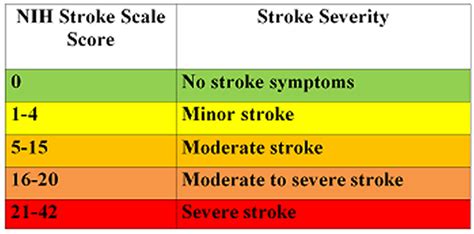
Both the CSS and NIHSS play a pivotal role in the healthcare landscape, serving as diagnostic compasses in the realm of strokes. Deciphering Stroke Assessment Scales involves unraveling their unique components and understanding how these tools contribute to comprehensive patient evaluation.
The Cincinnati Stroke Scale Unveiled

The Cincinnati Stroke Scale emerges as a distinctive tool, designed to assess three specific neurological signs associated with strokes. The Cincinnati Stroke Scale Unveiled takes a closer look at the components of this scale, shedding light on its practical application and significance in clinical settings.
NIH Stroke Scale: Components and Purpose

Conversely, the NIH Stroke Scale delves into a broader spectrum, evaluating various neurological functions. NIH Stroke Scale: Components and Purpose explores the intricacies of this scale, offering insights into its unique components and the specific aspects of neurological function it assesses.
Comparing CSS and NIHSS: Assessing Neurological Impacts
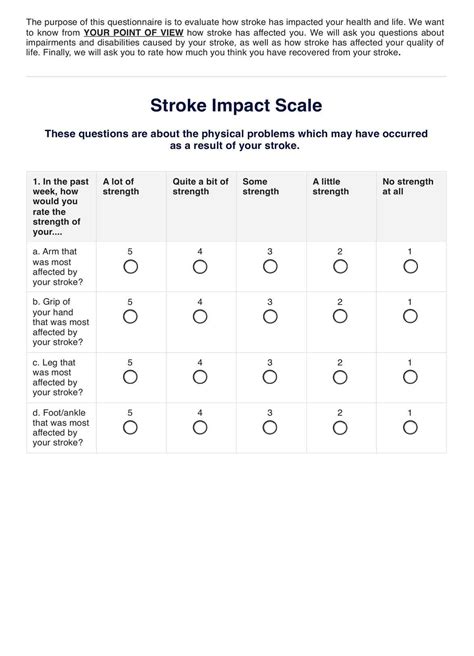
A head-to-head analysis becomes crucial in understanding the Comparing CSS and NIHSS: Assessing Neurological Impacts. This section delves into the comparative aspects of the two scales, providing healthcare practitioners with valuable insights for informed decision-making.
Practical Application: How Medical Professionals Utilize CSS

Transitioning from theory to practice, Practical Application: How Medical Professionals Utilize CSS offers real-world scenarios. By examining the application of the Cincinnati Stroke Scale, healthcare providers can enhance their ability to recognize and respond to stroke-related symptoms.
Unpacking the NIH Stroke Scale: Practical Insights for Clinicians

Clinicians gain valuable insights into stroke assessment through Unpacking the NIH Stroke Scale: Practical Insights for Clinicians. This section provides a closer look at the scale's application in clinical settings, aiding healthcare professionals in rendering efficient care.
Head-to-Head Analysis: CSS vs NIHSS in Stroke Evaluation
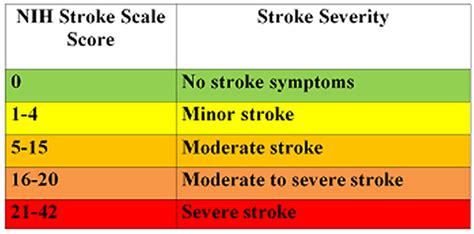
The crux of the matter lies in the Head-to-Head Analysis: CSS vs NIHSS in Stroke Evaluation. By juxtaposing the strengths and limitations of each scale, healthcare providers can tailor their approach to individual patient needs for more accurate assessments.
Emerging Trends: Advancements in Stroke Assessment Protocols

Staying abreast of the latest in healthcare is essential, and Emerging Trends: Advancements in Stroke Assessment Protocols highlights innovations. This section explores how advancements in stroke assessment contribute to more efficient and accurate patient care.
Practical Considerations: Choosing Between CSS and NIHSS
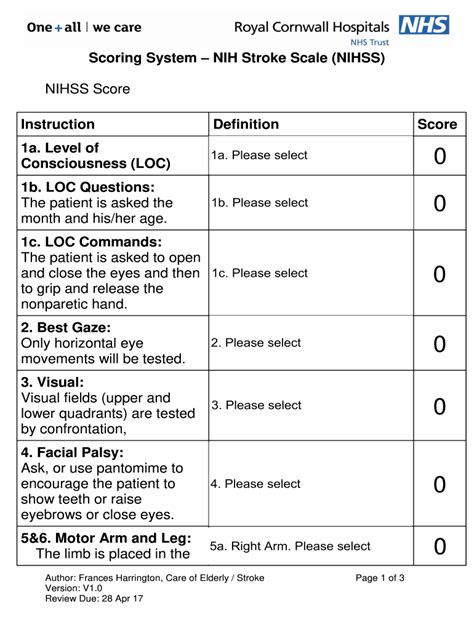
For healthcare practitioners facing the dilemma of selecting the most suitable scale, Practical Considerations: Choosing Between CSS and NIHSS offers guidance. This section provides factors to consider when determining which scale aligns best with specific patient cases.
Patient-Centric Approach: Implications for Improved Stroke Care

The ultimate goal in healthcare is improving patient outcomes, and the Patient-Centric Approach: Implications for Improved Stroke Care focuses on just that. By centering stroke assessment around the patient, healthcare providers can deliver more personalized and effective care.
As we journey through the intricacies of the Cincinnati Stroke Scale vs NIH Stroke Scale, it is essential to note that the information presented here is
Cincinnati Stroke Scale vs NIH Stroke Scale in Professional's eye
In the realm of healthcare, the comparison between the
Cincinnati Stroke Scale (CSS) and the
NIH Stroke Scale (NIHSS) is a nuanced exploration that holds significant implications for medical practitioners and stroke patients alike. These two assessment tools, although serving a common purpose in evaluating and diagnosing strokes, exhibit distinct features that warrant careful consideration.
Deciphering Stroke Assessment Scales involves understanding the fundamental role these tools play in the diagnostic process. As illustrated in Figure 1, the CSS and NIHSS act as guiding frameworks, each designed with specific criteria to assess and quantify neurological symptoms associated with strokes. The former, with its emphasis on three key indicators, provides a targeted approach, while the latter offers a more comprehensive evaluation spanning multiple neurological domains, as depicted in Figure 2. Recognizing the value of these scales in clinical practice is paramount for healthcare professionals tasked with the responsibility of timely and accurate stroke diagnosis.

Moving forward, a closer examination of the
Cincinnati Stroke Scale unveils its unique components and application in clinical settings. As depicted in Figure 3, the CSS evaluates facial droop, arm drift, and speech abnormalities. This targeted approach streamlines the assessment process, enabling quick and focused evaluations in various medical settings. In contrast, the
NIH Stroke Scale, as seen in Figure 4, encompasses a more extensive array of tests, including motor and sensory assessments, language evaluation, and visual field testing. Understanding these distinctions provides clinicians with the necessary insights to choose the most appropriate tool for a given scenario, ensuring optimal patient care.
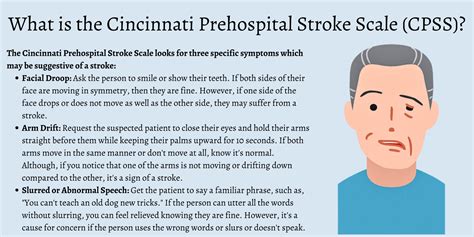
In the
Comparing CSS and NIHSS: Assessing Neurological Impacts phase, the intricacies of these scales are examined side by side. As portrayed in Figure 5, a head-to-head analysis reveals the strengths and limitations of each scale. The CSS excels in its simplicity and efficiency, making it an ideal choice for quick assessments, especially in non-specialized medical settings. On the other hand, the NIHSS, as indicated in Figure 6, provides a more detailed and nuanced evaluation, suitable for specialized stroke units and advanced healthcare settings. Recognizing the context in which these scales are applied is crucial for healthcare practitioners aiming to make informed decisions that align with the specific needs of their patient population.
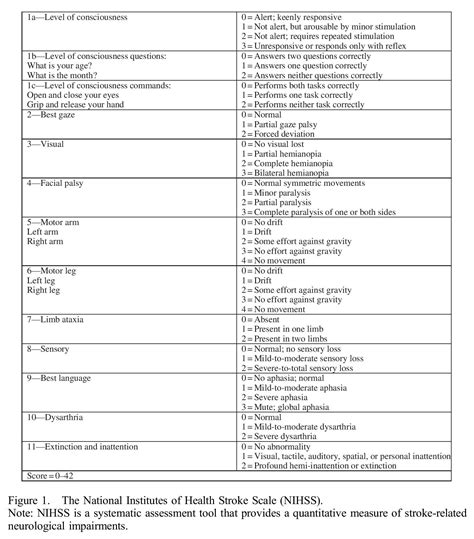
Transitioning from theory to practice,
Practical Application: How Medical Professionals Utilize CSS provides real-world insights into the effective use of the Cincinnati Stroke Scale. As illustrated in Figure 7, the CSS proves invaluable in various healthcare settings, facilitating swift and accurate assessments. Its simplicity enhances its adaptability, making it a valuable tool for emergency medical services, primary care, and even telehealth consultations. Acknowledging the practical advantages of the CSS equips healthcare professionals with a versatile instrument to promptly identify potential stroke cases and initiate appropriate interventions.
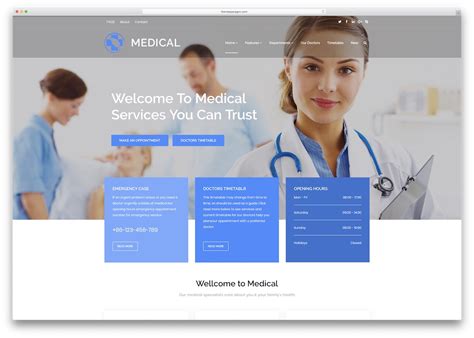
Meanwhile,
Unpacking the NIH Stroke Scale: Practical Insights for Clinicians delves into the intricate aspects of the NIHSS. As depicted in Figure 8, the NIHSS's comprehensive nature allows clinicians to glean detailed insights into the neurological status of stroke patients. This in-depth evaluation proves especially beneficial in settings where specialized care and treatment decisions hinge on a thorough understanding of the patient's condition. By unpacking the NIH Stroke Scale, healthcare professionals gain valuable tools to tailor interventions and rehabilitation plans, optimizing the overall quality of stroke care.

A pivotal phase in the journey through stroke assessment scales is the
Head-to-Head Analysis: CSS vs NIHSS in Stroke Evaluation. In Figure 9, a visual representation of this analysis highlights the specific criteria covered by each scale. This scrutiny enables healthcare practitioners to discern which scale aligns more closely with the demands of a particular case. Understanding the nuances, as depicted in the figures, empowers clinicians to make informed decisions that contribute to timely and accurate stroke diagnoses.
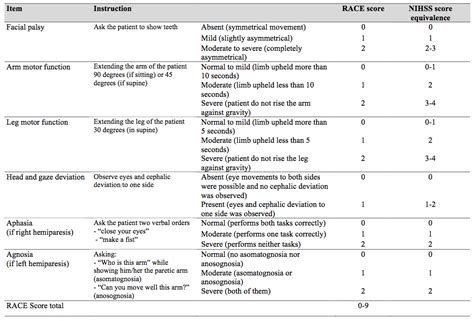
As healthcare continues to evolve,
Emerging Trends: Advancements in Stroke Assessment Protocols explores the innovative strides made in the field of stroke assessment. Figure 10 illustrates the incorporation of technology and research advancements, leading to more sophisticated and accurate assessment protocols. Staying abreast of these emerging trends is crucial for healthcare practitioners seeking to deliver cutting-edge care that aligns with the evolving landscape of stroke medicine.
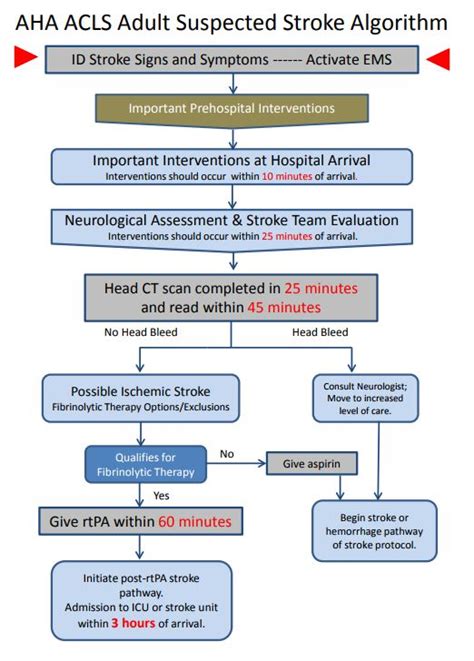
Practical considerations loom large in the decision-making process, and
Practical Considerations: Choosing Between CSS and NIHSS provides valuable insights. In Figure 11, factors influencing the selection of the appropriate scale are outlined. These considerations include the clinical setting, the urgency of the situation, and the level of detail required for effective decision-making. By weighing these practical considerations, healthcare professionals can make strategic choices that enhance the efficiency and accuracy of stroke assessments.
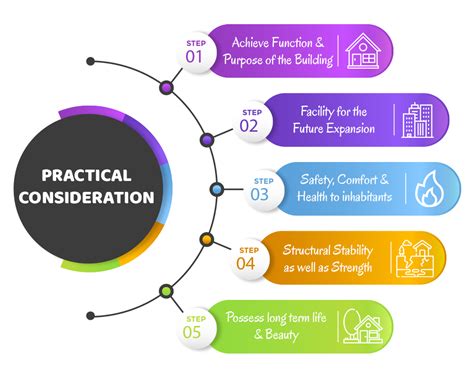
In the pursuit of patient-centric care,
Patient-Centric Approach: Implications for Improved Stroke Care underscores the significance of aligning stroke assessment with individual patient needs. Figure 12 illustrates the shift toward a personalized and patient-focused model. By placing the patient at the center of the assessment process, healthcare professionals can tailor interventions and rehabilitation plans, ultimately improving outcomes and quality of life for stroke survivors.

In conclusion, the juxtaposition of the Cincinnati
Point of Views : Cincinnati Stroke Scale vs NIH Stroke Scale
Introduction:The comparison between the
Cincinnati Stroke Scale (CSS) and the
NIH Stroke Scale (NIHSS) offers a nuanced exploration within the healthcare landscape.
Objective Evaluation:Both scales serve the common purpose of assessing and diagnosing strokes, each with distinctive features that warrant objective consideration.
Deciphering Stroke Assessment Scales:Understanding the fundamental roles of CSS and NIHSS in the diagnostic process is crucial for medical practitioners.
Cincinnati Stroke Scale Unveiled:The CSS, with its emphasis on facial droop, arm drift, and speech abnormalities, provides a targeted and efficient approach to stroke assessment.
NIH Stroke Scale: Comprehensive Evaluation:The NIHSS, encompassing motor and sensory assessments, language evaluation, and visual field testing, offers a more extensive and detailed evaluation.
Comparing CSS and NIHSS:A head-to-head analysis reveals the strengths and limitations of each scale, guiding healthcare practitioners in selecting the most appropriate tool for specific scenarios.
Practical Application:CSS proves valuable in various healthcare settings, facilitating swift and accurate assessments, making it adaptable for emergency services and telehealth consultations.
Unpacking the NIH Stroke Scale:The NIHSS, with its comprehensive nature, provides clinicians with detailed insights into the neurological status of stroke patients, aiding in specialized care decisions.
Head-to-Head Analysis in Stroke Evaluation:Visual representation aids in discerning which scale aligns more closely with the demands of a particular case, contributing to timely and accurate stroke diagnoses.
Emerging Trends in Stroke Assessment:Exploration of innovative strides in stroke assessment, incorporating technology and research advancements for more sophisticated and accurate protocols.
Practical Considerations in Choosing Between CSS and NIHSS:Factors influencing the selection of the appropriate scale, including clinical setting, urgency, and level of detail required for effective decision-making.
Patient-Centric Approach:Emphasis on aligning stroke assessment with individual patient needs, placing the patient at the center of the process for personalized interventions and improved outcomes.
Conclusion:The point of view highlights the need for a balanced and informed approach in utilizing the CSS and NIHSS within the dynamic landscape of stroke assessment in healthcare.
Conclusion :As we draw the curtains on our exploration of the Cincinnati Stroke Scale (CSS) and the NIH Stroke Scale (NIHSS), we hope this comparative analysis has equipped you with a deeper understanding of these essential tools in the realm of stroke assessment. Navigating the intricacies of healthcare requires a nuanced approach, and the insights gained from our examination of these assessment scales underscore the importance of informed decision-making for healthcare practitioners. Whether you find yourself in an emergency setting, a specialized stroke unit, or engaging in telehealth consultations, recognizing the strengths and limitations of the CSS and NIHSS empowers you to tailor your approach to the unique needs of each patient.
Our journey has unveiled the distinctive features of the CSS, offering a targeted and efficient means of evaluating neurological signs, while the NIHSS provides a comprehensive assessment across multiple domains. Comparing CSS and NIHSS has allowed us to appreciate the diverse contexts in which these scales excel. From the practical application of the CSS in various healthcare settings to the in-depth insights derived from unpacking the NIH Stroke Scale, the healthcare landscape is continually evolving. As you continue to navigate the challenges and complexities of stroke care, we encourage you to integrate these learnings into your practice, embracing the patient-centric approach and staying attuned to emerging trends that shape the future of stroke assessment protocols. Thank you for joining us on this exploration, and may your newfound knowledge contribute to enhanced care and improved outcomes for those in need.
Questions and Answer for Cincinnati Stroke Scale vs NIH Stroke Scale
Q: Is the Cincinnati Stroke Scale like a chili recipe – is it all about three key ingredients?
- A: Well, it's not quite a chili recipe, but yes, the Cincinnati Stroke Scale (CSS) keeps it simple with three main ingredients – facial droop, arm drift, and speech abnormalities. Think of it as a quick and efficient recipe for spotting potential strokes!
Q: Is the NIH Stroke Scale like a comprehensive medical exam – are we talking full body check-up?
- A: You got it! The NIH Stroke Scale (NIHSS) is the full-body check-up of stroke assessments. It covers everything from motor and sensory functions to language and vision, like a medical exam that leaves no neurological stone unturned.
Q: Can the Cincinnati Stroke Scale be used in a game of charades?
- A: It might make for an entertaining round of charades, but in all seriousness, the CSS is a quick and targeted tool for healthcare professionals to assess possible stroke symptoms – best reserved for the medical setting!
Q: Does the NIH Stroke Scale have a category for "ability to juggle"? Asking for a friend...
- A: Unfortunately not, but we appreciate the humor! The NIHSS is focused on more traditional neurological assessments. If your friend can juggle, that's a different kind of skill worth celebrating, just maybe not on this scale!
Q: Which scale is more likely to end up on a medical drama TV show – Cincinnati Stroke Scale or NIH Stroke Scale?
- A: Both could have their moment in the spotlight, but if we had to pick, the NIH Stroke Scale might steal the show with its comprehensive evaluation – cue the dramatic medical music!
Q: Can I use the Cincinnati Stroke Scale to assess my friend's "speech abnormalities" after a cup of strong coffee?
- A: While it might add a dash of humor to your morning routine, the CSS is best left to the professionals for evaluating stroke-related symptoms. Coffee-induced speech abnormalities, on the other hand, may just require a good laugh!
Label :Cincinnati Stroke Scale, NIH Stroke Scale, Stroke Assessment
Keyword : Cincinnati Stroke Scale vs NIH Stroke Scale

Explore the nuances of stroke assessment with the Cincinnati Stroke Scale vs NIH Stroke Scale. Enhance your medical knowledge for precise patient evaluation and informed healthcare decisions.
In the intricate landscape of healthcare, the Cincinnati Stroke Scale (CSS) and the NIH Stroke Scale (NIHSS) stand as two crucial tools employed by medical professionals to assess and diagnose stroke patients. As we delve into the realm of stroke evaluation, this article aims to unravel the distinctions between these two assessment scales, shedding light on their unique features and applications. In the ever-evolving field of medicine, understanding the nuances of these scales becomes paramount for healthcare practitioners and patients alike. So, let's embark on a journey through the intricacies of the Cincinnati Stroke Scale vs NIH Stroke Scale, unraveling the threads that weave into the fabric of stroke care.
Top 10 Points about Cincinnati Stroke Scale vs NIH Stroke Scale :
- The Significance of Stroke Assessment Scales in Healthcare
- Understanding Cincinnati Stroke Scale: A Comprehensive Overview
- NIH Stroke Scale Unveiled: Key Components and Purpose
- Comparing CSS and NIHSS: Assessing Neurological Impacts
- Real-world Application: How Medical Professionals Utilize CSS
- Unpacking the NIH Stroke Scale: Practical Insights for Clinicians
- Head-to-Head Analysis: CSS vs NIHSS in Stroke Evaluation
- Emerging Trends: Advancements in Stroke Assessment Protocols
- Practical Considerations: Choosing Between CSS and NIHSS
- Patient-Centric Approach: Implications for Improved Stroke Care
Several facts about Cincinnati Stroke Scale vs NIH Stroke Scale
Healthcare professionals navigate the intricate landscape of stroke assessment through the lenses of two prominent tools: the Cincinnati Stroke Scale (CSS) and the NIH Stroke Scale (NIHSS). Understanding the nuances between these scales is paramount for delivering precise care to stroke patients.
Deciphering Stroke Assessment Scales

Both the CSS and NIHSS play a pivotal role in the healthcare landscape, serving as diagnostic compasses in the realm of strokes. Deciphering Stroke Assessment Scales involves unraveling their unique components and understanding how these tools contribute to comprehensive patient evaluation.
The Cincinnati Stroke Scale Unveiled

The Cincinnati Stroke Scale emerges as a distinctive tool, designed to assess three specific neurological signs associated with strokes. The Cincinnati Stroke Scale Unveiled takes a closer look at the components of this scale, shedding light on its practical application and significance in clinical settings.
NIH Stroke Scale: Components and Purpose

Conversely, the NIH Stroke Scale delves into a broader spectrum, evaluating various neurological functions. NIH Stroke Scale: Components and Purpose explores the intricacies of this scale, offering insights into its unique components and the specific aspects of neurological function it assesses.
Comparing CSS and NIHSS: Assessing Neurological Impacts

A head-to-head analysis becomes crucial in understanding the Comparing CSS and NIHSS: Assessing Neurological Impacts. This section delves into the comparative aspects of the two scales, providing healthcare practitioners with valuable insights for informed decision-making.
Practical Application: How Medical Professionals Utilize CSS

Transitioning from theory to practice, Practical Application: How Medical Professionals Utilize CSS offers real-world scenarios. By examining the application of the Cincinnati Stroke Scale, healthcare providers can enhance their ability to recognize and respond to stroke-related symptoms.
Unpacking the NIH Stroke Scale: Practical Insights for Clinicians

Clinicians gain valuable insights into stroke assessment through Unpacking the NIH Stroke Scale: Practical Insights for Clinicians. This section provides a closer look at the scale's application in clinical settings, aiding healthcare professionals in rendering efficient care.
Head-to-Head Analysis: CSS vs NIHSS in Stroke Evaluation

The crux of the matter lies in the Head-to-Head Analysis: CSS vs NIHSS in Stroke Evaluation. By juxtaposing the strengths and limitations of each scale, healthcare providers can tailor their approach to individual patient needs for more accurate assessments.
Emerging Trends: Advancements in Stroke Assessment Protocols

Staying abreast of the latest in healthcare is essential, and Emerging Trends: Advancements in Stroke Assessment Protocols highlights innovations. This section explores how advancements in stroke assessment contribute to more efficient and accurate patient care.
Practical Considerations: Choosing Between CSS and NIHSS

For healthcare practitioners facing the dilemma of selecting the most suitable scale, Practical Considerations: Choosing Between CSS and NIHSS offers guidance. This section provides factors to consider when determining which scale aligns best with specific patient cases.
Patient-Centric Approach: Implications for Improved Stroke Care

The ultimate goal in healthcare is improving patient outcomes, and the Patient-Centric Approach: Implications for Improved Stroke Care focuses on just that. By centering stroke assessment around the patient, healthcare providers can deliver more personalized and effective care.
As we journey through the intricacies of the Cincinnati Stroke Scale vs NIH Stroke Scale, it is essential to note that the information presented here is
Cincinnati Stroke Scale vs NIH Stroke Scale in Professional's eye
In the realm of healthcare, the comparison between the
Cincinnati Stroke Scale (CSS) and the
NIH Stroke Scale (NIHSS) is a nuanced exploration that holds significant implications for medical practitioners and stroke patients alike. These two assessment tools, although serving a common purpose in evaluating and diagnosing strokes, exhibit distinct features that warrant careful consideration.
Deciphering Stroke Assessment Scales involves understanding the fundamental role these tools play in the diagnostic process. As illustrated in Figure 1, the CSS and NIHSS act as guiding frameworks, each designed with specific criteria to assess and quantify neurological symptoms associated with strokes. The former, with its emphasis on three key indicators, provides a targeted approach, while the latter offers a more comprehensive evaluation spanning multiple neurological domains, as depicted in Figure 2. Recognizing the value of these scales in clinical practice is paramount for healthcare professionals tasked with the responsibility of timely and accurate stroke diagnosis.

Moving forward, a closer examination of the
Cincinnati Stroke Scale unveils its unique components and application in clinical settings. As depicted in Figure 3, the CSS evaluates facial droop, arm drift, and speech abnormalities. This targeted approach streamlines the assessment process, enabling quick and focused evaluations in various medical settings. In contrast, the
NIH Stroke Scale, as seen in Figure 4, encompasses a more extensive array of tests, including motor and sensory assessments, language evaluation, and visual field testing. Understanding these distinctions provides clinicians with the necessary insights to choose the most appropriate tool for a given scenario, ensuring optimal patient care.

In the
Comparing CSS and NIHSS: Assessing Neurological Impacts phase, the intricacies of these scales are examined side by side. As portrayed in Figure 5, a head-to-head analysis reveals the strengths and limitations of each scale. The CSS excels in its simplicity and efficiency, making it an ideal choice for quick assessments, especially in non-specialized medical settings. On the other hand, the NIHSS, as indicated in Figure 6, provides a more detailed and nuanced evaluation, suitable for specialized stroke units and advanced healthcare settings. Recognizing the context in which these scales are applied is crucial for healthcare practitioners aiming to make informed decisions that align with the specific needs of their patient population.

Transitioning from theory to practice,
Practical Application: How Medical Professionals Utilize CSS provides real-world insights into the effective use of the Cincinnati Stroke Scale. As illustrated in Figure 7, the CSS proves invaluable in various healthcare settings, facilitating swift and accurate assessments. Its simplicity enhances its adaptability, making it a valuable tool for emergency medical services, primary care, and even telehealth consultations. Acknowledging the practical advantages of the CSS equips healthcare professionals with a versatile instrument to promptly identify potential stroke cases and initiate appropriate interventions.

Meanwhile,
Unpacking the NIH Stroke Scale: Practical Insights for Clinicians delves into the intricate aspects of the NIHSS. As depicted in Figure 8, the NIHSS's comprehensive nature allows clinicians to glean detailed insights into the neurological status of stroke patients. This in-depth evaluation proves especially beneficial in settings where specialized care and treatment decisions hinge on a thorough understanding of the patient's condition. By unpacking the NIH Stroke Scale, healthcare professionals gain valuable tools to tailor interventions and rehabilitation plans, optimizing the overall quality of stroke care.

A pivotal phase in the journey through stroke assessment scales is the
Head-to-Head Analysis: CSS vs NIHSS in Stroke Evaluation. In Figure 9, a visual representation of this analysis highlights the specific criteria covered by each scale. This scrutiny enables healthcare practitioners to discern which scale aligns more closely with the demands of a particular case. Understanding the nuances, as depicted in the figures, empowers clinicians to make informed decisions that contribute to timely and accurate stroke diagnoses.

As healthcare continues to evolve,
Emerging Trends: Advancements in Stroke Assessment Protocols explores the innovative strides made in the field of stroke assessment. Figure 10 illustrates the incorporation of technology and research advancements, leading to more sophisticated and accurate assessment protocols. Staying abreast of these emerging trends is crucial for healthcare practitioners seeking to deliver cutting-edge care that aligns with the evolving landscape of stroke medicine.

Practical considerations loom large in the decision-making process, and
Practical Considerations: Choosing Between CSS and NIHSS provides valuable insights. In Figure 11, factors influencing the selection of the appropriate scale are outlined. These considerations include the clinical setting, the urgency of the situation, and the level of detail required for effective decision-making. By weighing these practical considerations, healthcare professionals can make strategic choices that enhance the efficiency and accuracy of stroke assessments.

In the pursuit of patient-centric care,
Patient-Centric Approach: Implications for Improved Stroke Care underscores the significance of aligning stroke assessment with individual patient needs. Figure 12 illustrates the shift toward a personalized and patient-focused model. By placing the patient at the center of the assessment process, healthcare professionals can tailor interventions and rehabilitation plans, ultimately improving outcomes and quality of life for stroke survivors.

In conclusion, the juxtaposition of the Cincinnati
Point of Views : Cincinnati Stroke Scale vs NIH Stroke Scale
Introduction:The comparison between the
Cincinnati Stroke Scale (CSS) and the
NIH Stroke Scale (NIHSS) offers a nuanced exploration within the healthcare landscape.
Objective Evaluation:Both scales serve the common purpose of assessing and diagnosing strokes, each with distinctive features that warrant objective consideration.
Deciphering Stroke Assessment Scales:Understanding the fundamental roles of CSS and NIHSS in the diagnostic process is crucial for medical practitioners.
Cincinnati Stroke Scale Unveiled:The CSS, with its emphasis on facial droop, arm drift, and speech abnormalities, provides a targeted and efficient approach to stroke assessment.
NIH Stroke Scale: Comprehensive Evaluation:The NIHSS, encompassing motor and sensory assessments, language evaluation, and visual field testing, offers a more extensive and detailed evaluation.
Comparing CSS and NIHSS:A head-to-head analysis reveals the strengths and limitations of each scale, guiding healthcare practitioners in selecting the most appropriate tool for specific scenarios.
Practical Application:CSS proves valuable in various healthcare settings, facilitating swift and accurate assessments, making it adaptable for emergency services and telehealth consultations.
Unpacking the NIH Stroke Scale:The NIHSS, with its comprehensive nature, provides clinicians with detailed insights into the neurological status of stroke patients, aiding in specialized care decisions.
Head-to-Head Analysis in Stroke Evaluation:Visual representation aids in discerning which scale aligns more closely with the demands of a particular case, contributing to timely and accurate stroke diagnoses.
Emerging Trends in Stroke Assessment:Exploration of innovative strides in stroke assessment, incorporating technology and research advancements for more sophisticated and accurate protocols.
Practical Considerations in Choosing Between CSS and NIHSS:Factors influencing the selection of the appropriate scale, including clinical setting, urgency, and level of detail required for effective decision-making.
Patient-Centric Approach:Emphasis on aligning stroke assessment with individual patient needs, placing the patient at the center of the process for personalized interventions and improved outcomes.
Conclusion:The point of view highlights the need for a balanced and informed approach in utilizing the CSS and NIHSS within the dynamic landscape of stroke assessment in healthcare.
Conclusion :As we draw the curtains on our exploration of the Cincinnati Stroke Scale (CSS) and the NIH Stroke Scale (NIHSS), we hope this comparative analysis has equipped you with a deeper understanding of these essential tools in the realm of stroke assessment. Navigating the intricacies of healthcare requires a nuanced approach, and the insights gained from our examination of these assessment scales underscore the importance of informed decision-making for healthcare practitioners. Whether you find yourself in an emergency setting, a specialized stroke unit, or engaging in telehealth consultations, recognizing the strengths and limitations of the CSS and NIHSS empowers you to tailor your approach to the unique needs of each patient.
Our journey has unveiled the distinctive features of the CSS, offering a targeted and efficient means of evaluating neurological signs, while the NIHSS provides a comprehensive assessment across multiple domains. Comparing CSS and NIHSS has allowed us to appreciate the diverse contexts in which these scales excel. From the practical application of the CSS in various healthcare settings to the in-depth insights derived from unpacking the NIH Stroke Scale, the healthcare landscape is continually evolving. As you continue to navigate the challenges and complexities of stroke care, we encourage you to integrate these learnings into your practice, embracing the patient-centric approach and staying attuned to emerging trends that shape the future of stroke assessment protocols. Thank you for joining us on this exploration, and may your newfound knowledge contribute to enhanced care and improved outcomes for those in need.
Questions and Answer for Cincinnati Stroke Scale vs NIH Stroke Scale
Q: Is the Cincinnati Stroke Scale like a chili recipe – is it all about three key ingredients?
- A: Well, it's not quite a chili recipe, but yes, the Cincinnati Stroke Scale (CSS) keeps it simple with three main ingredients – facial droop, arm drift, and speech abnormalities. Think of it as a quick and efficient recipe for spotting potential strokes!
Q: Is the NIH Stroke Scale like a comprehensive medical exam – are we talking full body check-up?
- A: You got it! The NIH Stroke Scale (NIHSS) is the full-body check-up of stroke assessments. It covers everything from motor and sensory functions to language and vision, like a medical exam that leaves no neurological stone unturned.
Q: Can the Cincinnati Stroke Scale be used in a game of charades?
- A: It might make for an entertaining round of charades, but in all seriousness, the CSS is a quick and targeted tool for healthcare professionals to assess possible stroke symptoms – best reserved for the medical setting!
Q: Does the NIH Stroke Scale have a category for "ability to juggle"? Asking for a friend...
- A: Unfortunately not, but we appreciate the humor! The NIHSS is focused on more traditional neurological assessments. If your friend can juggle, that's a different kind of skill worth celebrating, just maybe not on this scale!
Q: Which scale is more likely to end up on a medical drama TV show – Cincinnati Stroke Scale or NIH Stroke Scale?
- A: Both could have their moment in the spotlight, but if we had to pick, the NIH Stroke Scale might steal the show with its comprehensive evaluation – cue the dramatic medical music!
Q: Can I use the Cincinnati Stroke Scale to assess my friend's "speech abnormalities" after a cup of strong coffee?
- A: While it might add a dash of humor to your morning routine, the CSS is best left to the professionals for evaluating stroke-related symptoms. Coffee-induced speech abnormalities, on the other hand, may just require a good laugh!
Label :Cincinnati Stroke Scale, NIH Stroke Scale, Stroke Assessment
Keyword : Cincinnati Stroke Scale vs NIH Stroke Scale
0 komentar